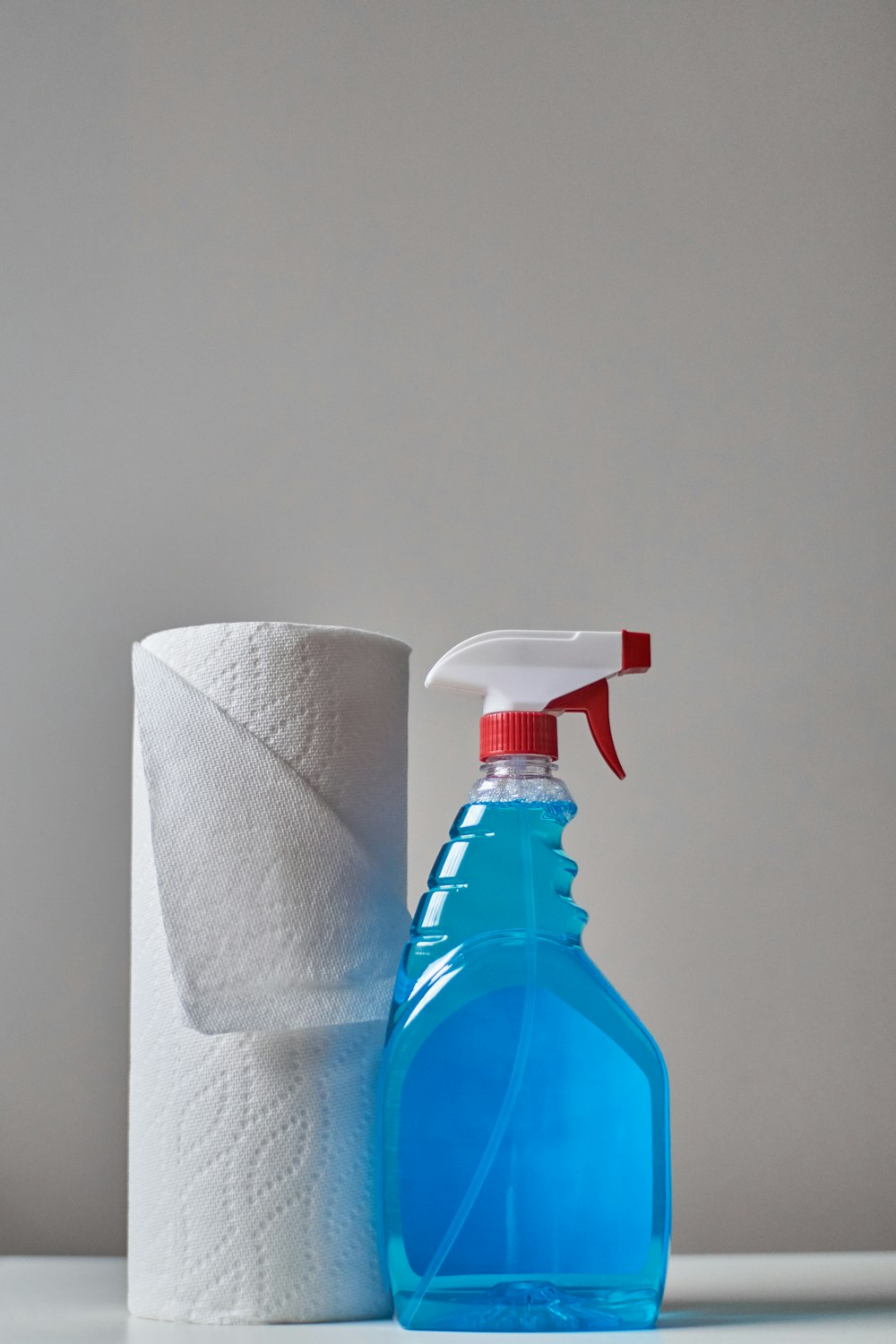Nearly every household uses products containing hazardous materials or chemicals.
Although the risk of a chemical accident is slight, knowing how to handle these products and how to react during an emergency can reduce the risk of injury.
There are probably many hazardous materials throughout your home. Take a tour of your home to see where these materials are located. Use the below list of common hazardous household items to guide you in your hunt. Once you have located a product, check the label and take the necessary steps to ensure that you are using, storing, and disposing of the material according to the manufacturer’s directions.
It is critical to store household chemicals in places where children cannot access them. Remember that products such as aerosol cans of hair spray and deodorant, nail polish and nail polish remover, toilet bowl cleaners, and furniture polishes all fall into the category of hazardous materials.

Before a Household Chemical Emergency
Guidelines for buying and storing hazardous household chemicals safely:
- Buy only as much of a chemical as you think you will use. Leftover material can be shared with neighbors or donated to a business, charity, or government agency. For example, excess pesticide could be offered to a greenhouse or garden center, and theater groups often need surplus paint. Some communities have organized waste exchanges where household hazardous chemicals and waste can be swapped or given away.
- Keep products containing hazardous materials in their original containers and never remove the labels unless the container is corroding. Corroding containers should be repackaged and clearly labeled.
- Never store hazardous products in food containers.
- Never mix household hazardous chemicals or waste with other products. Incompatibles, such as chlorine bleach and ammonia, may react, ignite, or explode.
Take precautions to prevent and respond to accidents:
- Follow the manufacturer’s instructors for the proper use of the household chemical.
- Never smoke while using household chemicals.
- Never use hair spray, cleaning solutions, paint products, or pesticides near an open flame (e.g., pilot light, lighted candle, fireplace, wood burning stove, etc.) Although you may not be able to see or smell them, vapor particles in the air could catch fire or explode.
- Clean up any chemical spill immediately. Use rags to clean up the spill. Wear gloves and eye protection. Allow the fumes in the rags to evaporate outdoors, then dispose of the rags by wrapping them in a newspaper and placing them in a sealed plastic bag in your trash can.
- Dispose of hazardous materials correctly. Take household hazardous waste to a local collection program. Check with your county or state environmental or solid waste agency to learn if there is a household hazardous waste collection program in your area.
- Post the number of the emergency medical services and the poison control center by all telephones. In an emergency situation, you may not have time to look up critical phone numbers. The national poison control number is (800) 222-1222.
During a Household Chemical Emergency
If there is a danger of fire or explosion:
- Get out of the residence immediately. Do not waste time collecting items or calling the fire department when you are in danger. Call the fire department from outside (a cellular phone or a neighbor’s phone) once you are safely away from danger.
- Stay upwind and away from the residence to avoid breathing toxic fumes.
Recognize and respond to symptoms of toxic poisoning:
- Difficulty breathing
- Irritation of the eyes, skin, throat, or respiratory tract
- Changes in skin color
- Headache or blurred vision
- Dizziness
- Clumsiness or lack of coordination
- Cramps or diarrhea
If someone is experiencing toxic poisoning symptoms or has been exposed to a household chemical:
- Find any containers of the substance that are readily available in order to provide requested information. Call the national poison control center at 1 (800) 222-1222.
- Follow the emergency operator or dispatcher’s first aid instructions carefully. The first aid advice found on containers may be out of date or inappropriate. Do not give anything by mouth unless advised to do so by a medical professional.
Discard clothing that may have been contaminated. Some chemicals may not wash out completely.
Hazardous Household Items
Cleaning Products
- Oven cleaners
- Drain cleaners
- Wood and metal cleaners/polishes
- Toilet cleaners
- Tub, tile and shower cleaners
- Bleach (laundry)
- Pool Chemicals
Indoor Pesticides
- Ant sprays and baits
- Cockroach sprays and baits
- Flea repellents and shampoo
- Bug sprays
- Houseplant insecticides
- Moth repellents
- Mouse and rat poisons and bats
Automotive Products
- Motor oil
- Fuel additives
- Carburetor and fuel injection cleaners
- Air conditioning refrigerants
- Starter fluids
- Automotive batteries
- Transmission and brake fluid
- Antifreeze
Workshop/Painting Supplies
- Adhesives and glues
- Furniture strippers
- Oil or enamel based paint
- Stains and finishies
- Paint thinners and turpentine
- Paint strippers and removers
- Photographic chemicals
- Fixatives and other solvents
Lawn and Garden Products
- Herbicides
- Insecticides
- Fungicides/ wood preservatives
Miscellaneous
- Batteries
- Mercury thermostats or thermometers
- Flourescent light bulbs
- Driveway sealer
Other Flammable Products
- Propane tanks and other compressed gas cylinders
- Kerosene
- Home heating oil
- Diesel fuel
- Gas/oil mix
- Lighter fluid
